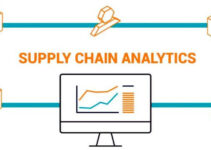Various factors disrupt the supply chain processes like labor shortage, transport delays, or the changing consumer demand. They have amplified the pressure on companies and their supply chains to provide quality products and services on time while dealing with other issues and challenges. Today, we’ll discuss top professional tips on managing supply chain disruption.
Supply Chain Disruption
As the name implies, it comprises a disruption in the company’s production network and normal routine operations. The intensity and scope of disruption are different and it would impact the following;
- Suppliers
- Company’s employees
- Profitability
- Reputation
- Productivity
Nowadays, the global SC network is always facing the risk of disruption because of the various political, economic, border, and other macro and micro factors. Increment in the risk factor amplifies the complication in the SC processes. However, the intensity of the impact is different for different types of businesses relevant to their infrastructure and resilient supply chains.
Managing Supply Chain Disruption – Top Tips
Some of the top tips for managing supply chain disruption are as follows;
Resiliently Ready For Disruption
The best strategy to deal with SC disruptions is by planning and becoming ready for the change. When you realize the fact that the disruption would happen at any time and would influence SC processes, then you are ready to deal with the difficult situation. However, establishing a resilient SC is a continuous process and it requires proactively, agility, and collaboration.
Beware of Regulations
Governments of different countries are always introducing new laws and regulations and making amendments to their existing laws for businesses to conduct their operations in ethical ways. It is significant to keep in mind that there are different laws depending on the location, sector, size, turnover, and market. Some of the key SC regulations that you should be aware of are as follows;
- European Union (EU) mandatory human rights
- Germany’s Supply Chain due diligence
- Norway’s transparent act
Sustainable SC
When it comes to launching the sustainable SC; then it keeps in mind both social and environmental aspects of the business. If you are coordinating with suppliers, then it has a great impact on the SC processes and leads you to engage in sustainable business activities.
However, if the company has established social and environmental guidelines and procedures for its and supplier’s operations; then it is a great start to engage in sustainable activities. It is significant that you should discuss it with the supplier while setting up guidelines. It helps you to understand what goals and objectives they can meet, and what type of support they need.
Employing Technology to Recognize Risk
Digital technological tools and software play a significant role to minimize the SCRM factors to the lowest level. In fact, those tools allow you to comprehend the environmental risk and human rights issues involved in the SC processes, and prioritize those risks based on their intensity.
Mapping to Amplify Visibility
As they say that you can only deal with a particular situation if you can measure and analyze it. In order to recognize the social and environmental risk factors, it is significant that they should amplify visibility by mapping the SC processes. If you are employing the right tools and software, then mapping becomes much simpler and easier. However, mapping the SC processes amplifies the visibility of suppliers. Once you have developed the map, then it allows you;
- Learn about the processes of suppliers
- Comprehend their functionality
- Environmental impact on them
Setup Contingency Strategies
The focus of procurement professionals should be on cost efficiency. Usually, the cost of emergency expenditure is much higher than investing in SC risk management. The best strategy to avoid such unnecessary costs is to be ready for all types of risks that may happen in the future. Companies should collaborate with various types of partners and partner up with the most reliable supplier. If any type of unexpected event comes up, then you should have a contingency plan ready for it.
Join Hands with SC Professionals
It is important to have SC professionals in your contact list that would offer you support if any type of disturbance comes up. They would guide you to manage disruption, and extra charges, and find alternate delivery service providers. They help you in the following ways;
- Offer you global logistic support
- Show delivery lead time
- Duties and taxes at the checkout points
- Help you to deal with customer expectations in the disruption time
Diversify Suppliers
Just like capital investment, you should avoid relying only on one supplier, and your focus should be on diversifying the supplier. After mapping out the SC processes, it is significant that you should various alternate suppliers from more than one location. It would help you to go for the second plan when any type of disruption happens.
Launch SC Vulnerability Audit
In order words, it means conducting a risk analysis and it would help you to determine the most feeble connection in the supply chain. It would help you to know when and where you need the alternative. Therefore, it is highly useful if you analyze political, economic, and social factors that would potentially disrupt your supply chain.
Establish Inventory
It is important that your business should have a stock of necessary supplies for daily operations that the company could rely on in case of any disrupted event. They could be in the form of the following;
- Raw material
- Equipment
- Components
- Stock of finished goods
Conclusion: Managing Supply Chain Disruption
After an in-depth study of managing supply chain disruption; we have realized that a disrupted SC process could badly impact the operations of your business. If you are learning how to deal with supply chain disruption, then you should keep in mind the abovementioned professional tips.
References
Ahsan is an accomplished researcher and has a deep insight in worldly life affairs. He goes Live 3 days a week on various social media platforms. Other than research writing, he’s a very interesting person.


